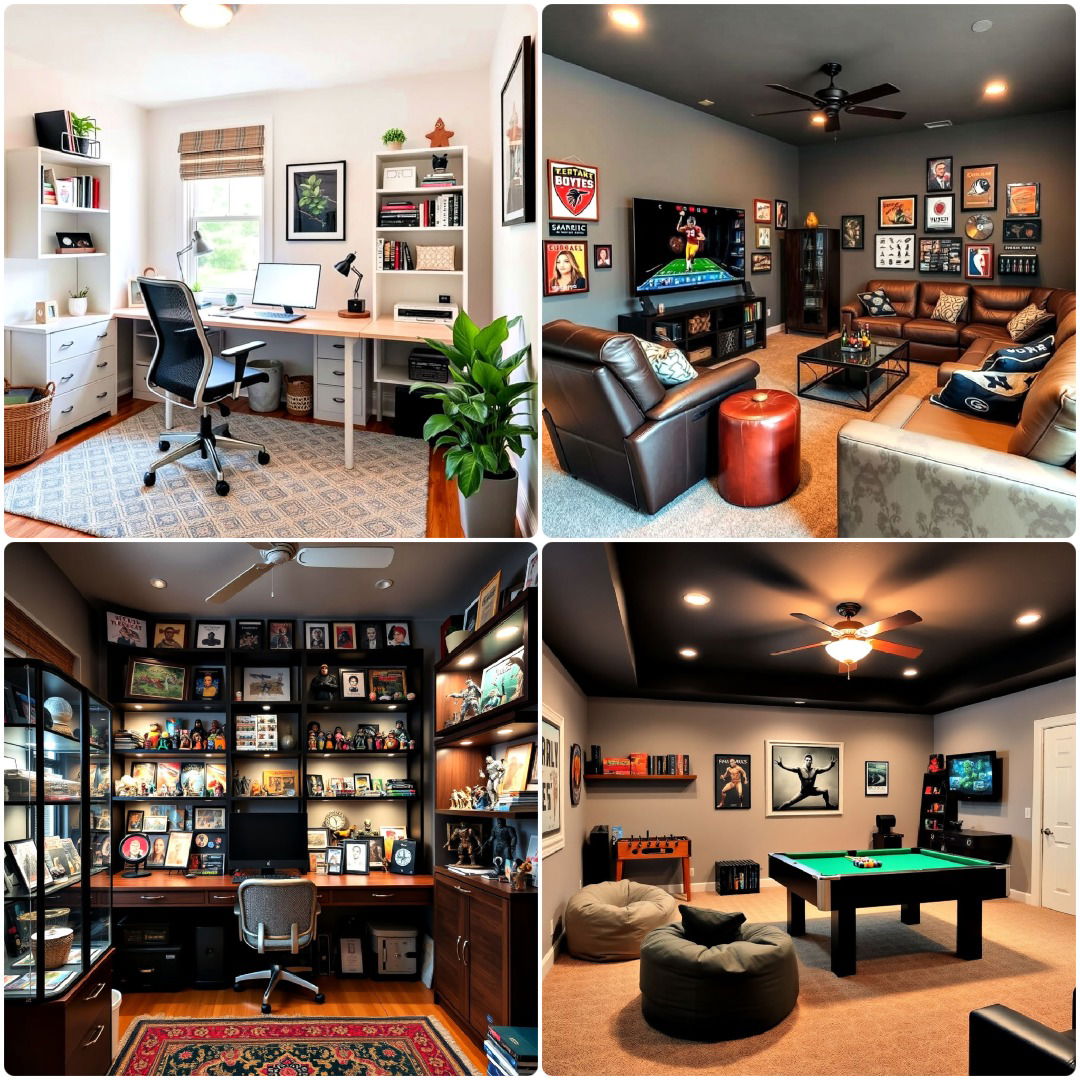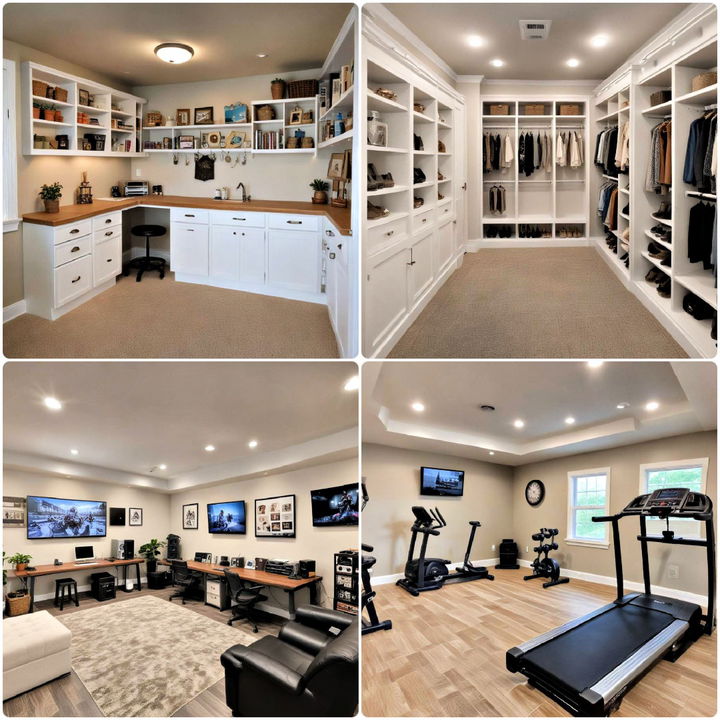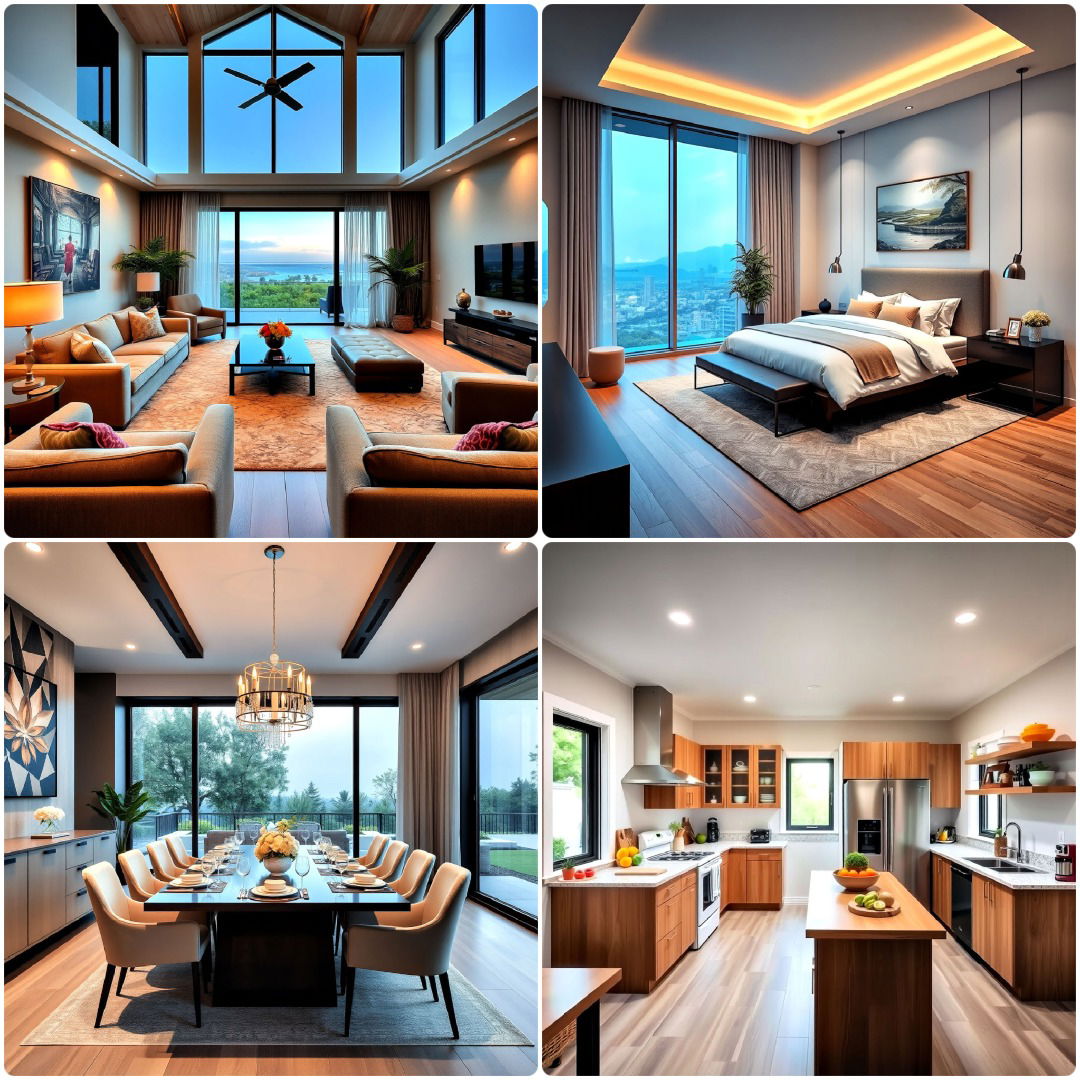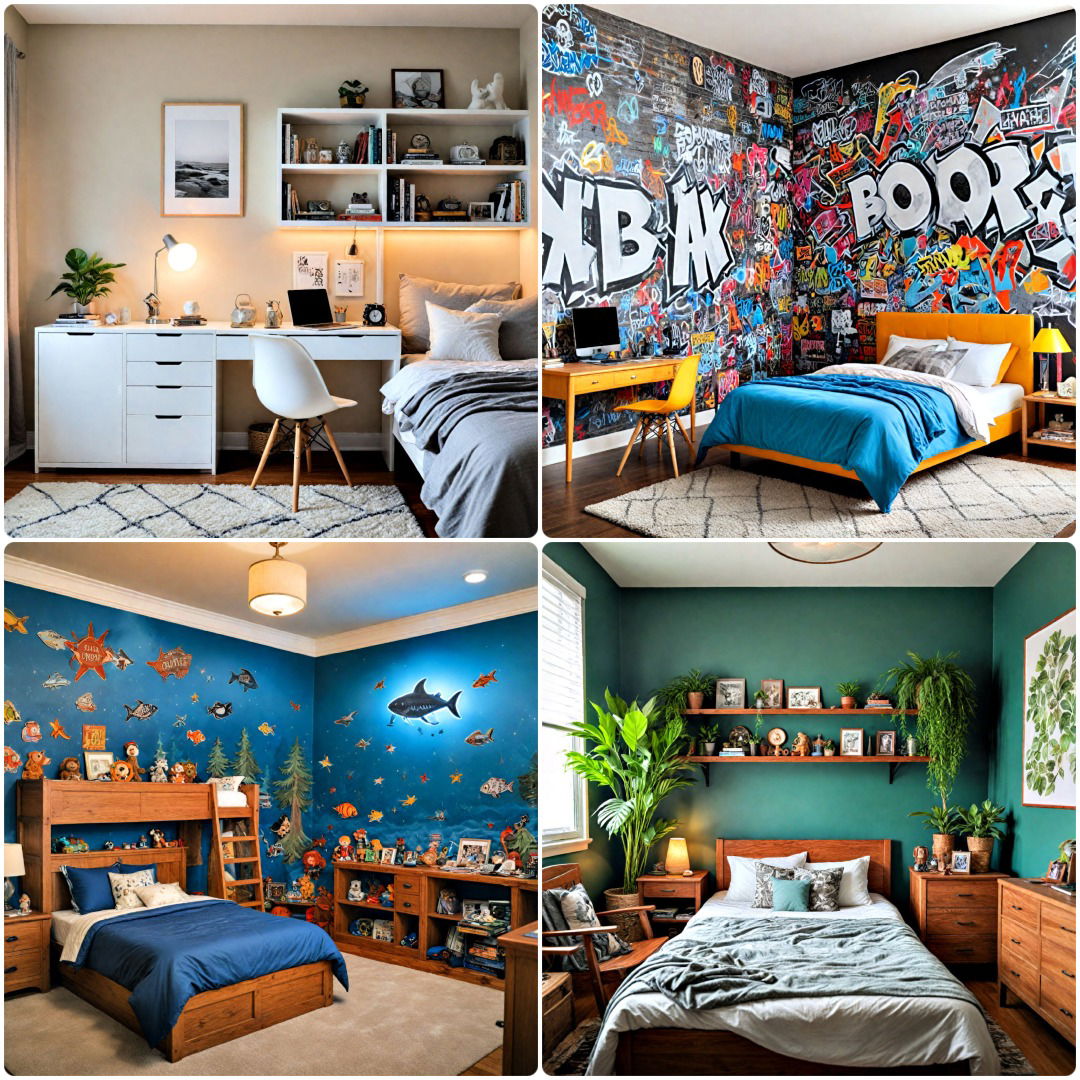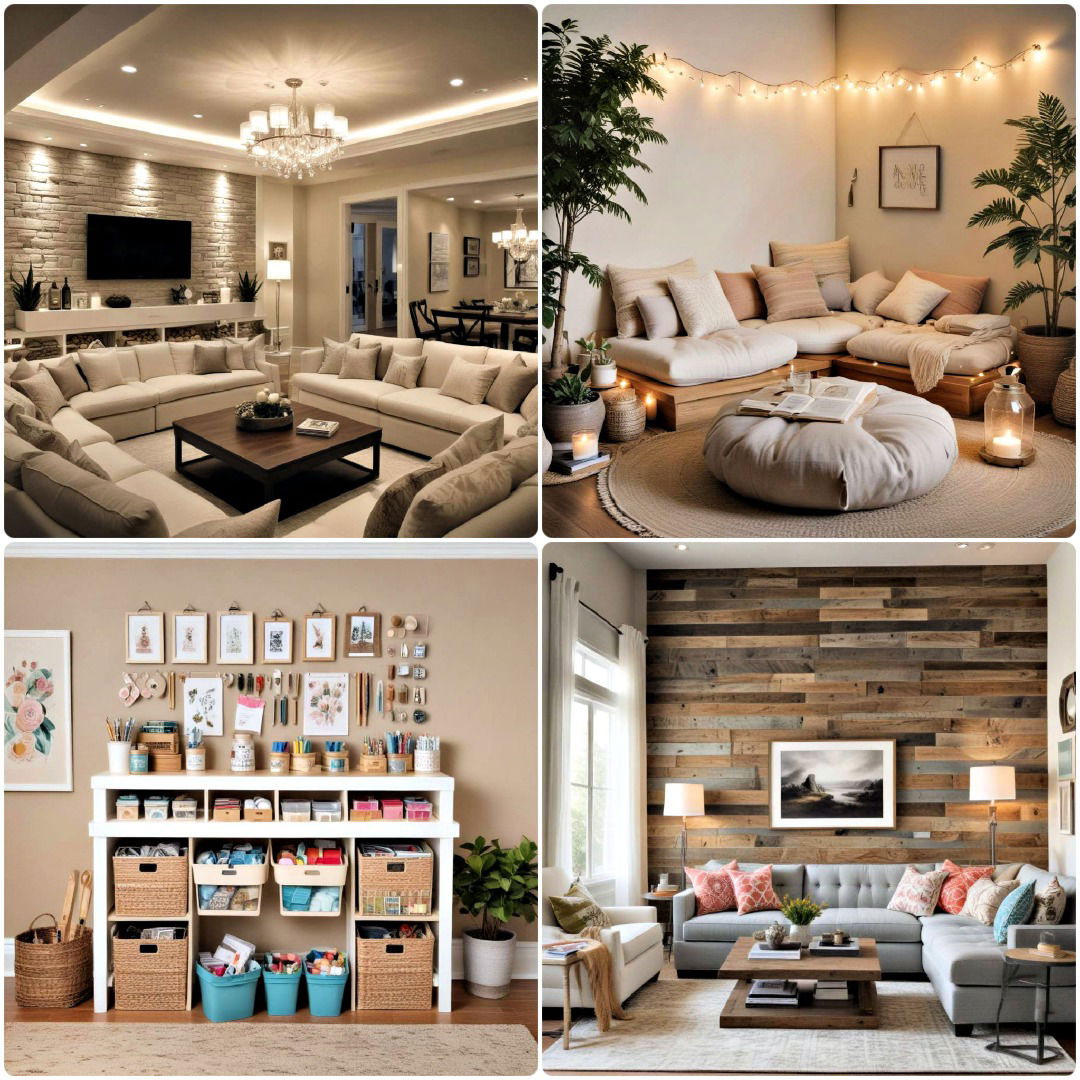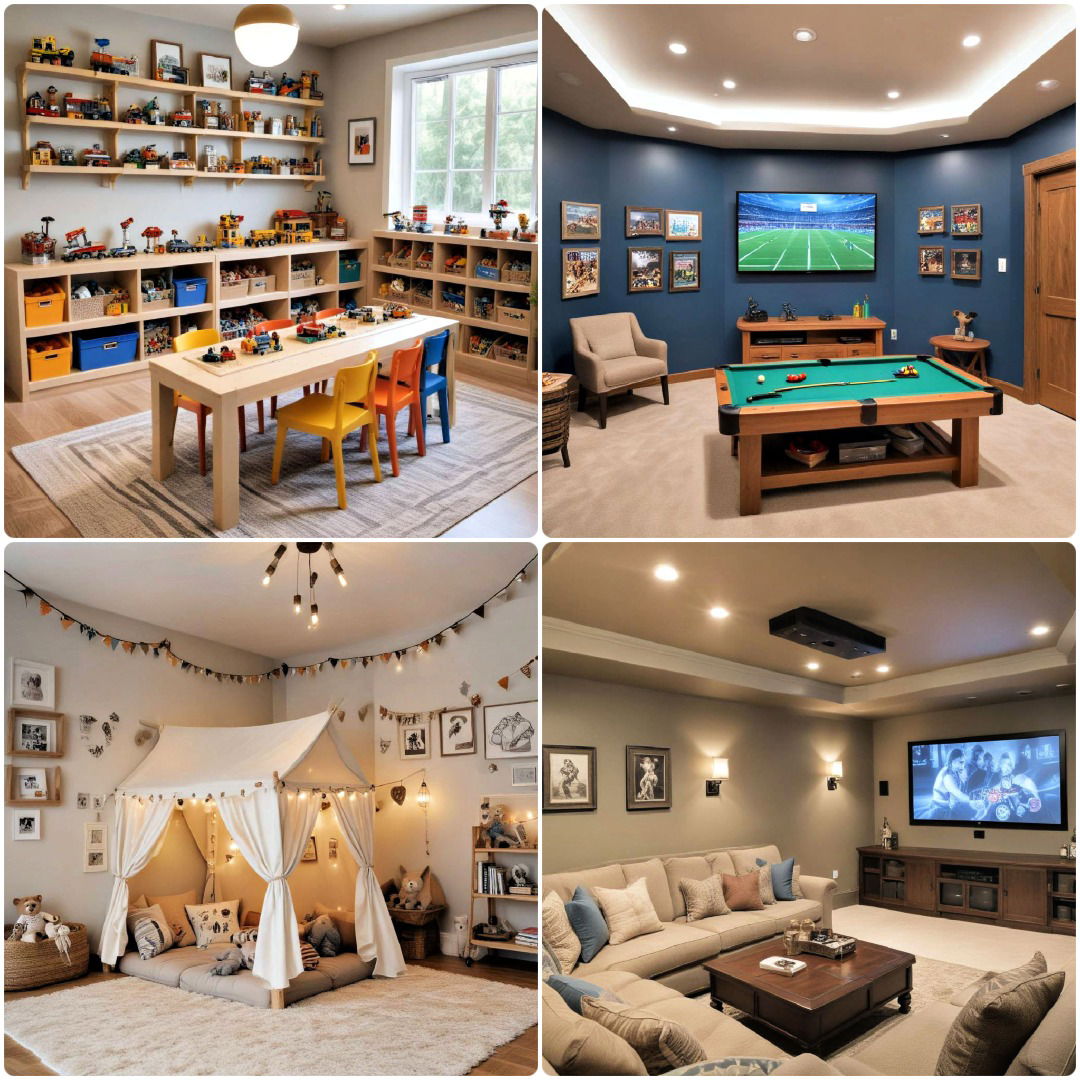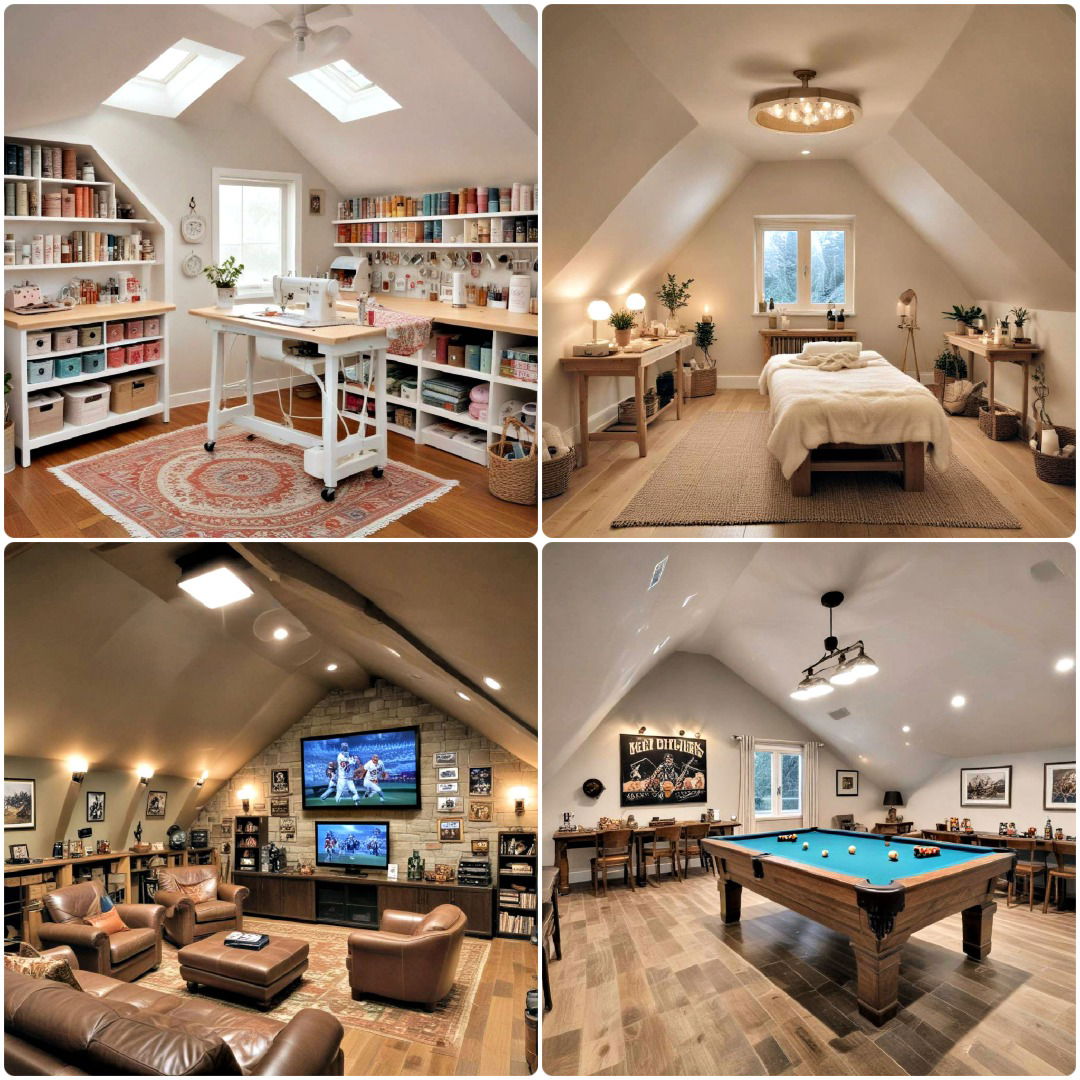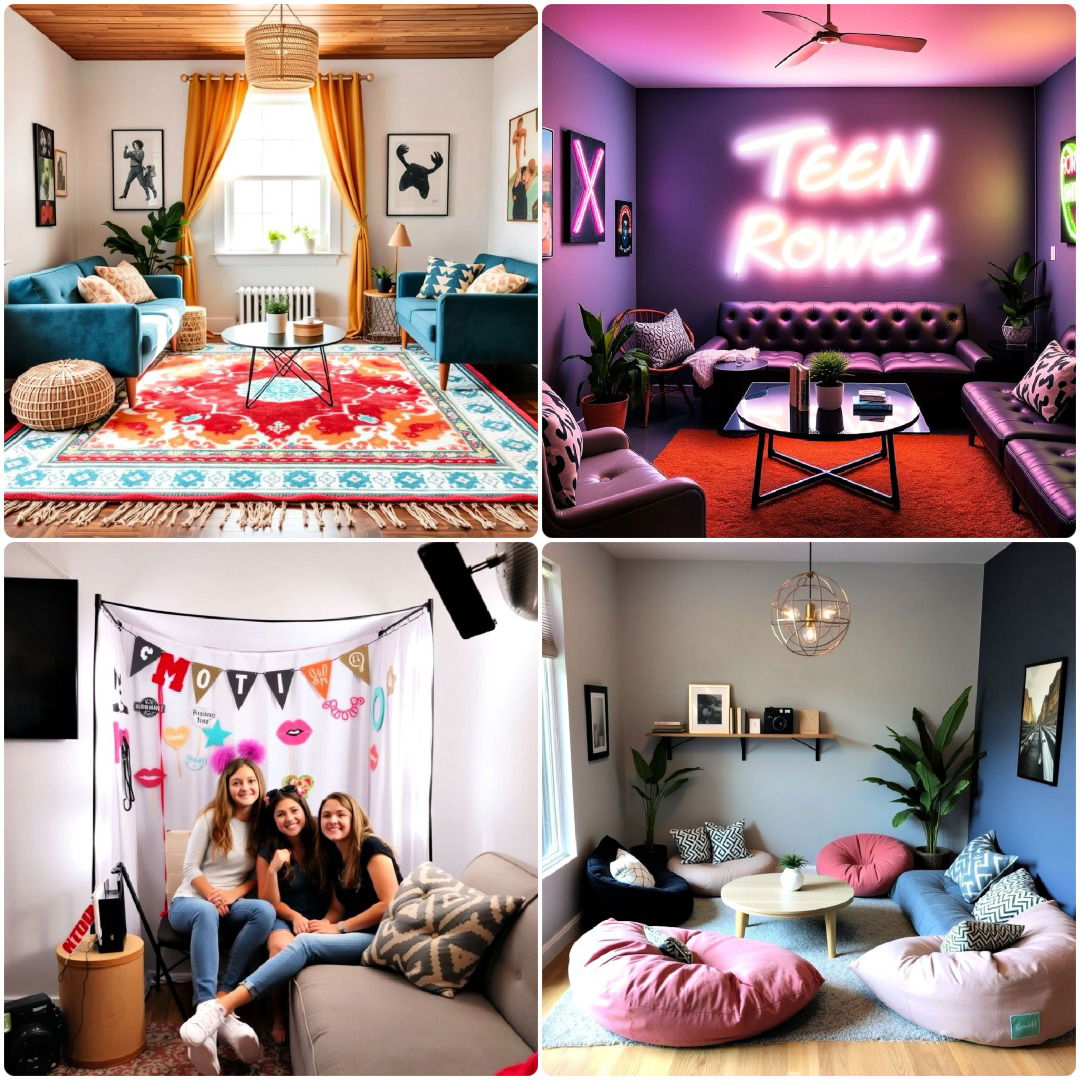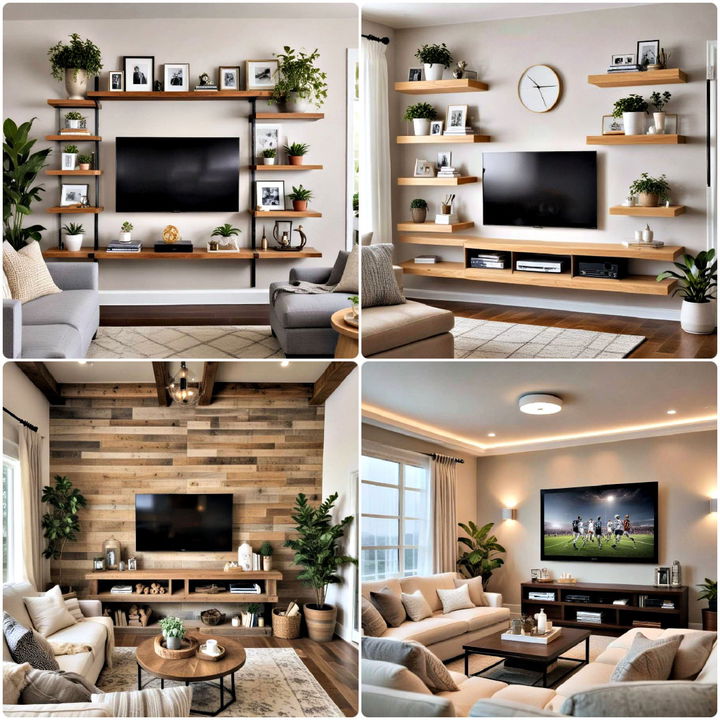Creating a functional and inspiring space for homeschooling can make a big difference in your child's learning experience. We've gathered 25 homeschool room ideas to help parents create an engaging and organized environment. These ideas are perfect for any size room, ensuring you can make the most of your space while meeting your child's educational needs. You'll find information on furniture, storage solutions, and creative setups to enhance learning.
With these homeschool classroom ideas, you'll learn how to create a space that encourages focus and creativity. From organizing supplies to setting up comfortable study areas, we've got you covered. We'll explore ways to decorate and utilize your room efficiently to benefit your child's learning journey.
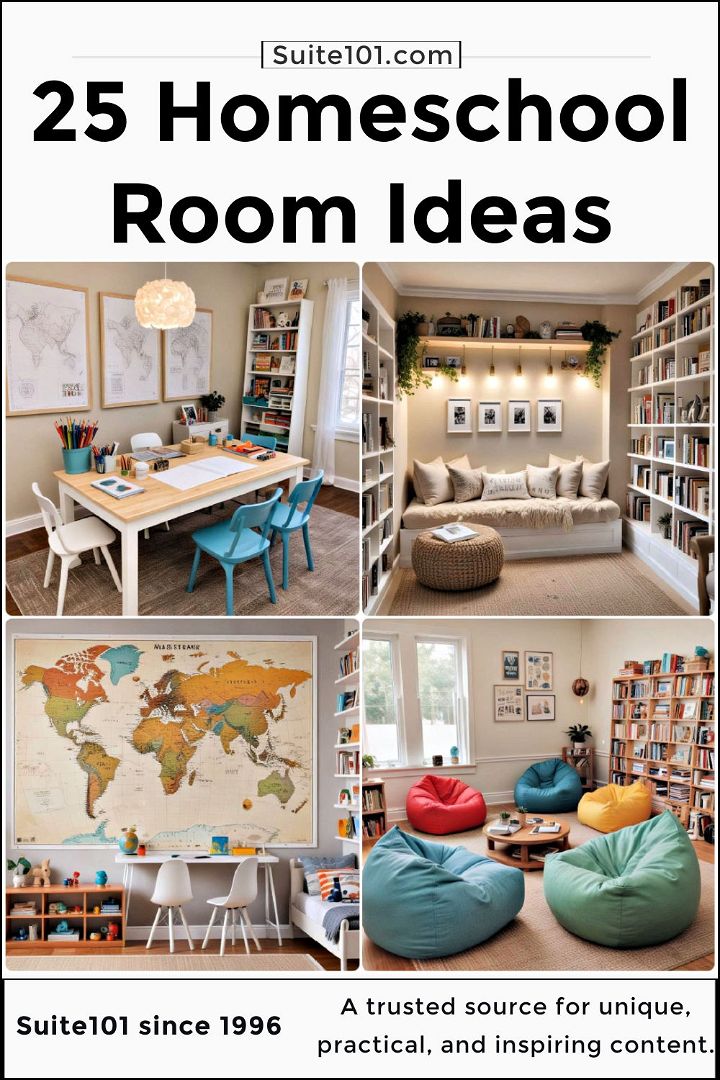
Discover these 25 homeschool room ideas to create an inspiring, organized, and functional learning space for your kids at home!
1. Cozy Reading Nook
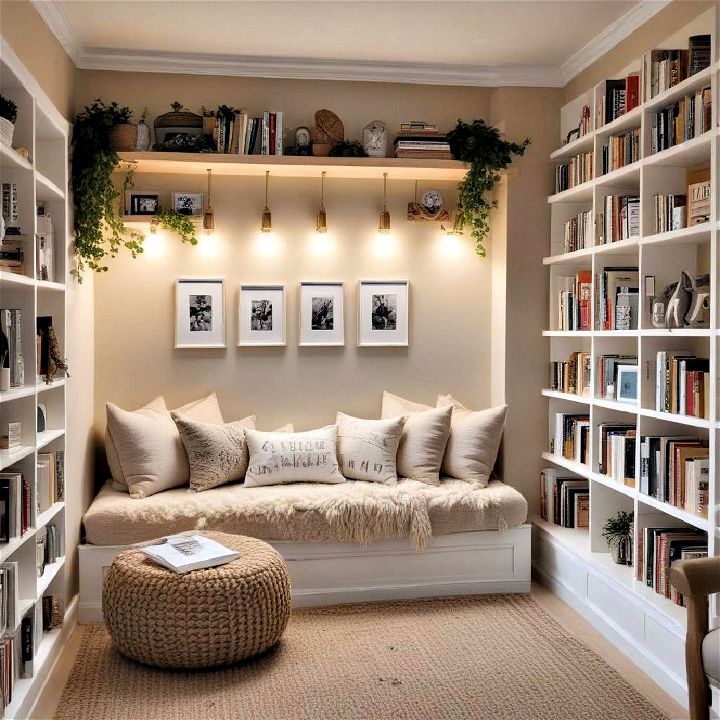
Transform a quiet corner into a cozy reading nook. Load it with soft cushions, a sturdy bookshelf, and ample lighting. This inviting space encourages kids to immerse themselves in books, enhancing their literacy skills and fostering a love for reading. Plus, it's an excellent way to take a break from more formal learning tasks.
2. Multipurpose Learning Table
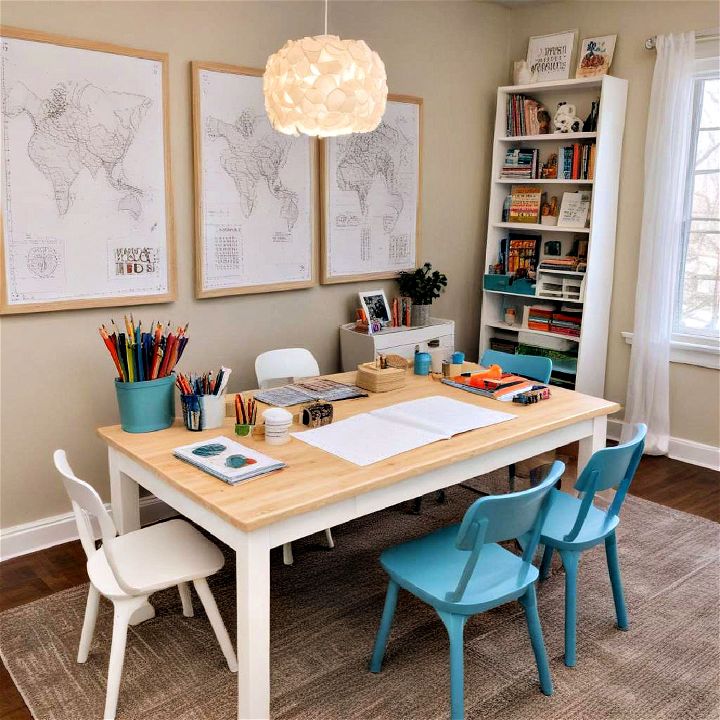
A multipurpose learning table can serve as the centerpiece of your homeschool room. It provides ample space for various activities like writing, art projects, and science experiments. Opt for a design with storage shelves underneath to keep supplies organized. This versatile table keeps the room tidy and learning-focused.
3. Educational Wall Art

Educational wall art adds visual interest and aids learning. Consider posters of world maps, the solar system, and math charts. These easy-to-change visuals make lessons engaging and interactive. Plus, they can inspire curiosity and spark conversations about different subjects.
4. Active Learning Area
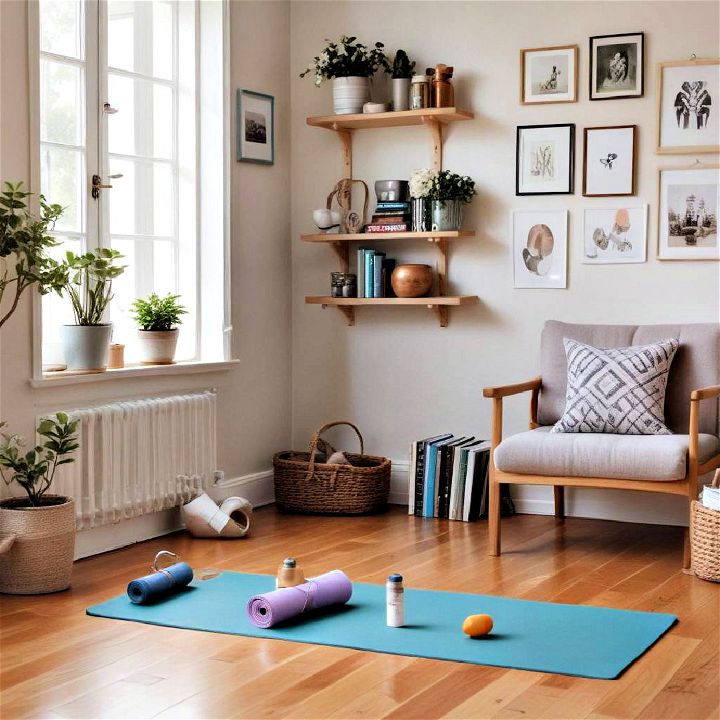
Designate a space for physical activity with yoga mats and exercise gear. Encourage movement with activities like stretching, dancing, and balance exercises. Physical activity helps in improving concentration and reducing stress, making it a fun and essential part of the daily routine.
5. Craft and Creativity Corner

Discover creative homeschool room ideas to make learning at home fun and effective. Set up a craft and creativity corner filled with art supplies like crayons, markers, and paints. This dedicated area allows children to explore their artistic skills freely. Encourage creativity and self-expression, essential for cognitive development and emotional well-being, in a vibrant, hands-on space.
6. Digital Learning Zone
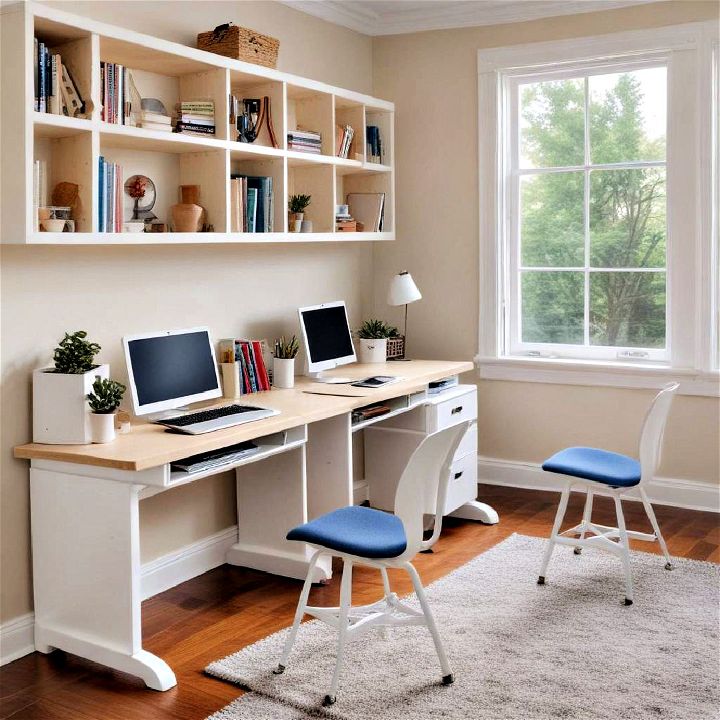
Incorporate a digital learning zone with a computer, printer, and educational software. Ensure it's equipped with ergonomic seating to promote good posture. This area is ideal for completing online assignments, attending virtual classes, and exploring digital resources, making technology an integral part of the learning experience.
7. Organized Storage Solutions
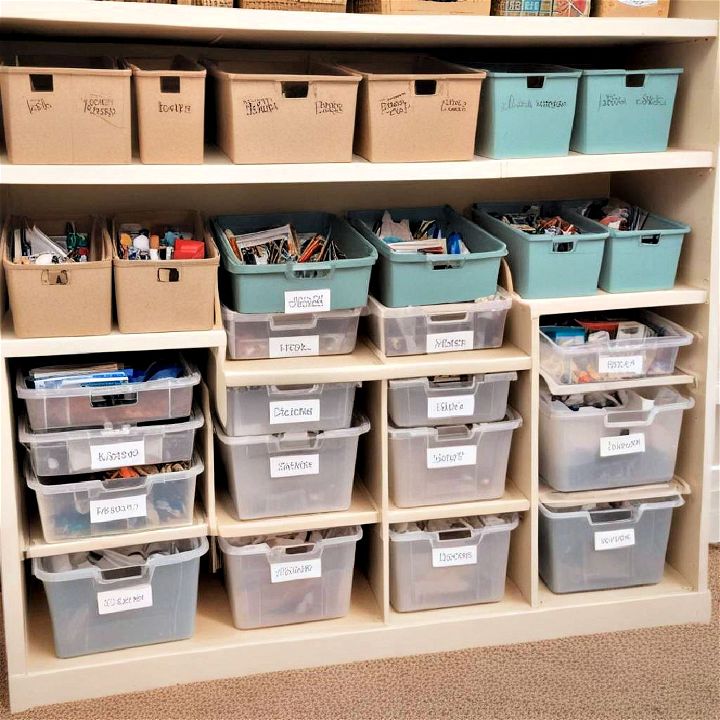
Utilize organized storage solutions like bins, drawers, and shelves to keep materials tidy. Label each container to make it easy to find and return items. This system reduces clutter and helps maintain focus, ensuring the room remains a calm, productive environment for learning and creativity.
8. Science Exploration Station
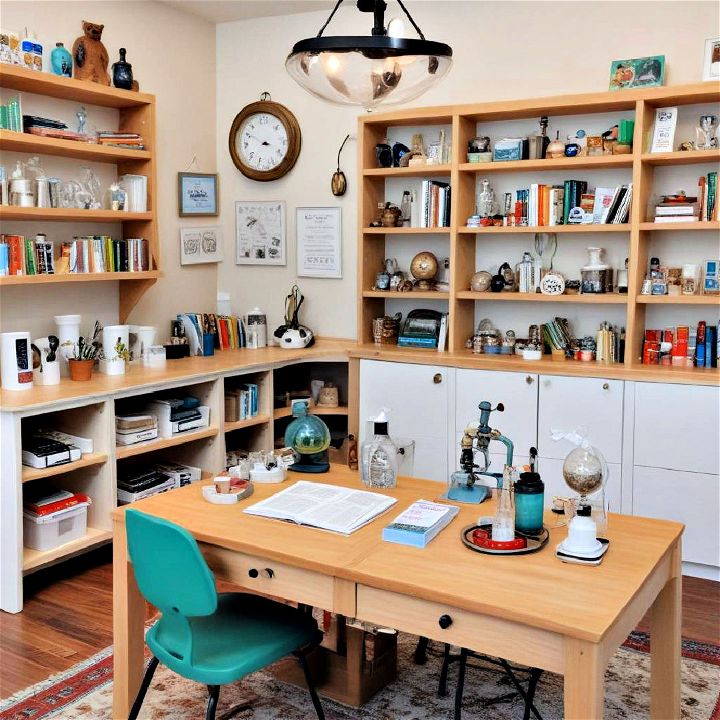
Create a science exploration station with magnifying glasses, microscopes, and specimen samples. Offer hands-on experiences to foster curiosity and a love for science. This dedicated area encourages kids to conduct experiments and observe phenomena, promoting critical thinking and inquiry-based learning.
9. Comfortable Seating Options
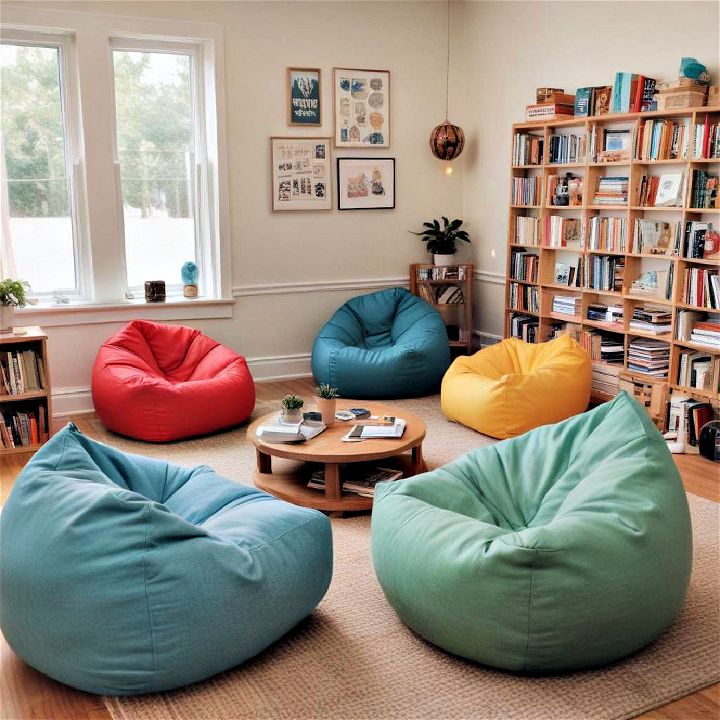
Get inspired by these practical homeschool classroom ideas for any space. Provide comfortable seating options like bean bags, floor cushions, and ergonomic chairs. Varying seating arrangements cater to different learning activities and preferences, enhancing comfort and focus. A relaxed seating environment makes children feel at ease, boosting their engagement and willingness to participate.
10. Bulletin and Display Boards

Integrate bulletin and display boards to showcase completed projects, schedules, and learning goals. Rotate displays to reflect current topics and achievements. This visual display of progress and work-in-progress keeps students motivated and organized, creating a dynamic and interactive learning environment.
11. Nature-Inspired Learning Area
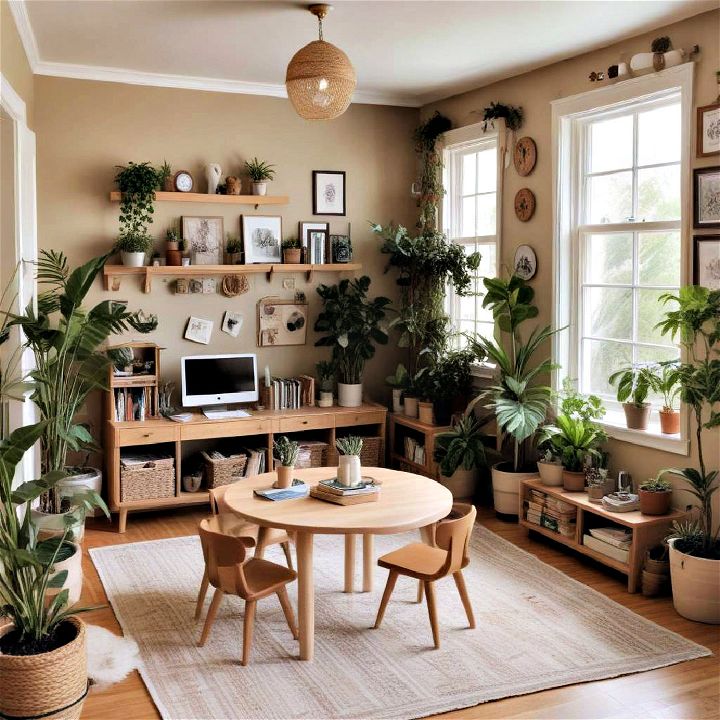
Incorporate a nature-inspired learning area with plants, natural light, and earthy colors. This environment fosters a sense of calm and promotes focus. Use it for nature studies or quiet reflection, connecting kids with the outdoors even while indoors, which enhances their overall well-being and encourages mindfulness.
12. Music and Sensory Space
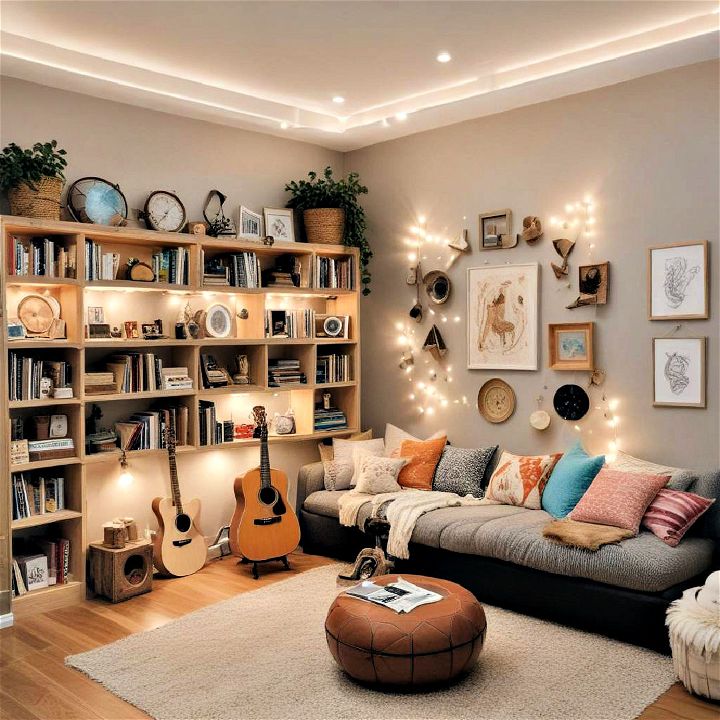
Dedicate a corner for music and sensory exploration with instruments, textured materials, and soothing lights. This space allows kids to express emotions and stimulate their senses. Integrating sensory activities supports emotional regulation, cognitive development, and creativity, making learning a comprehensive experience.
13. STEM Activity Center
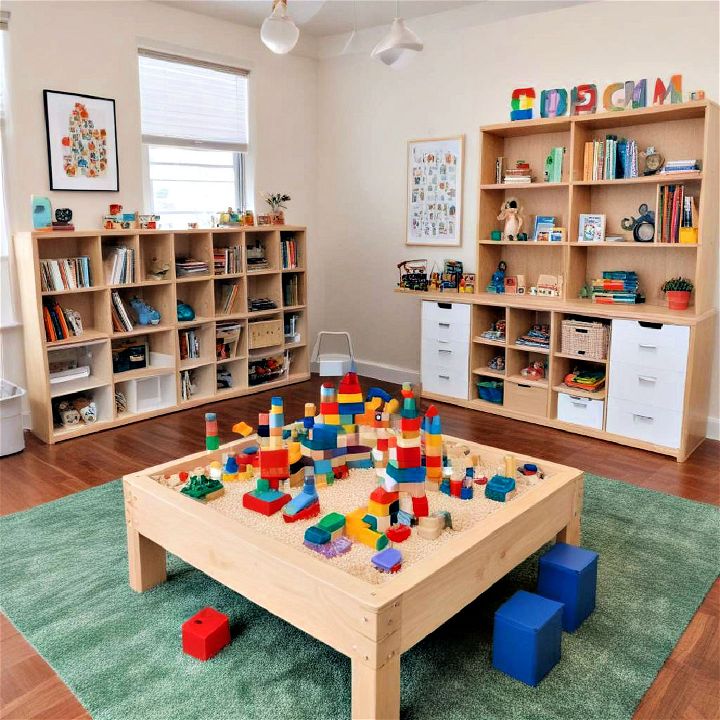
Establish a STEM activity center stocked with building blocks, coding kits, and math games. Focused on Science, Technology, Engineering, and Math, this area stimulates problem-solving and critical thinking skills. Encourage hands-on experiments and projects to help children grasp complex concepts through interactive play.
14. Dedicated Workspace for Each Child
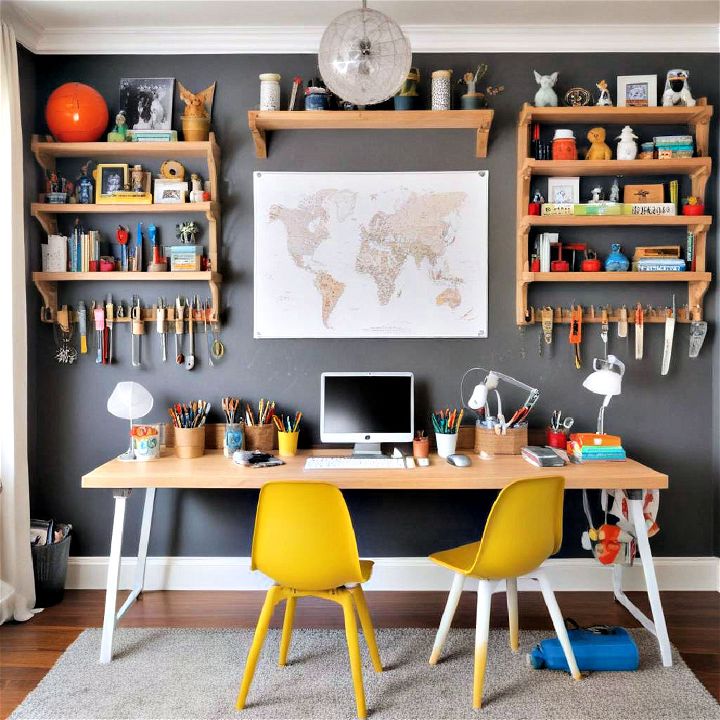
Optimize your space with these smart homeschool room setup tips. Assign a dedicated workspace tailored to each child's needs and preferences. Personalize it with tools and decorations that inspire them. Having their own space reduces distractions and promotes a sense of ownership and responsibility towards their studies, enhancing productivity.
15. Historical and Cultural Display
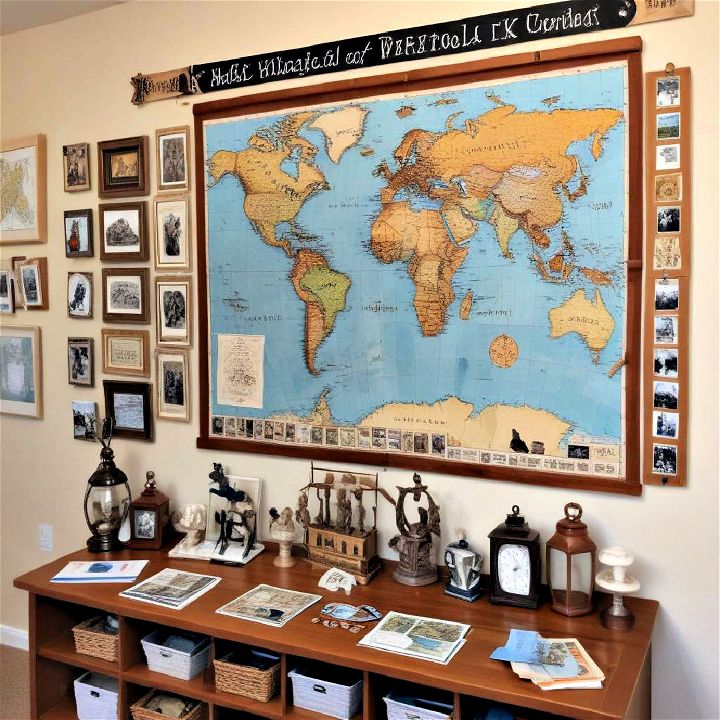
Curate a historical and cultural display with artifacts, maps, and timelines. Rotate the theme to align with current lessons or interests. This visual approach aids in understanding different cultures and historical periods, making abstract concepts tangible and engaging for students.
16. Interactive Whiteboard
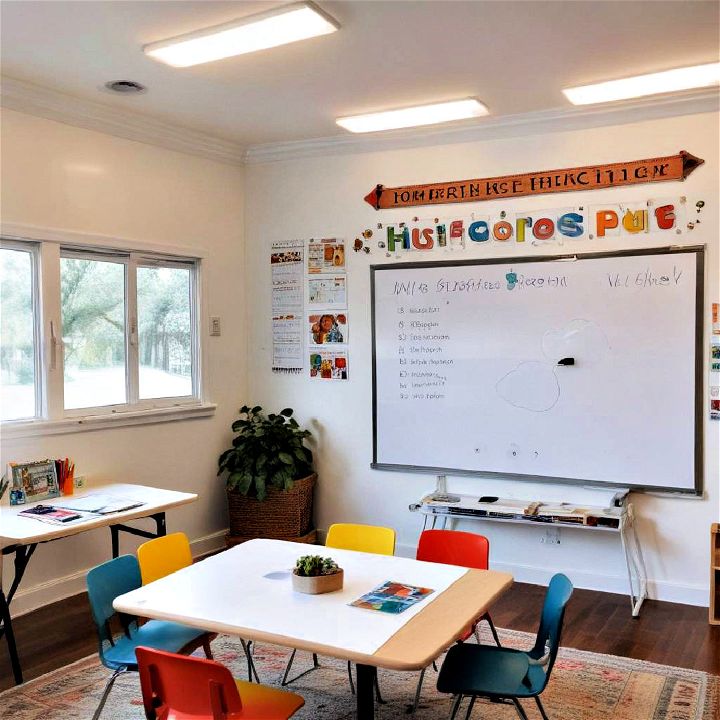
Install an interactive whiteboard for dynamic lessons and collaborative problem-solving. This versatile tool allows for drawing, writing, and accessing online resources. It makes learning more engaging and interactive, fostering group activities and enhancing the overall educational experience.
17. Quiet Zone for Focus and Relaxation
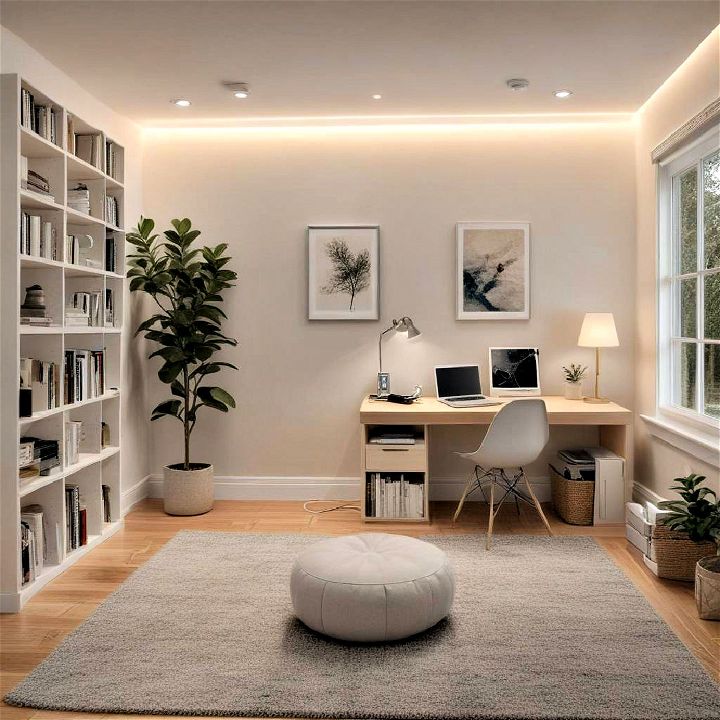
Designate a quiet zone equipped with noise-canceling headphones, soft lighting, and minimal distractions. Use this space for focused study sessions, meditation, or simply taking a break. This area helps kids recharge and maintain their concentration, balancing active learning with necessary downtime.
18. Portable Learning Kits

Assemble portable learning kits with essential supplies like notebooks, pencils, and educational games. These kits allow for flexibility in learning locations—inside or outside the home. Portable kits make it easy to adapt the learning environment to different needs, keeping education dynamic and versatile.
19. Life Skills Area
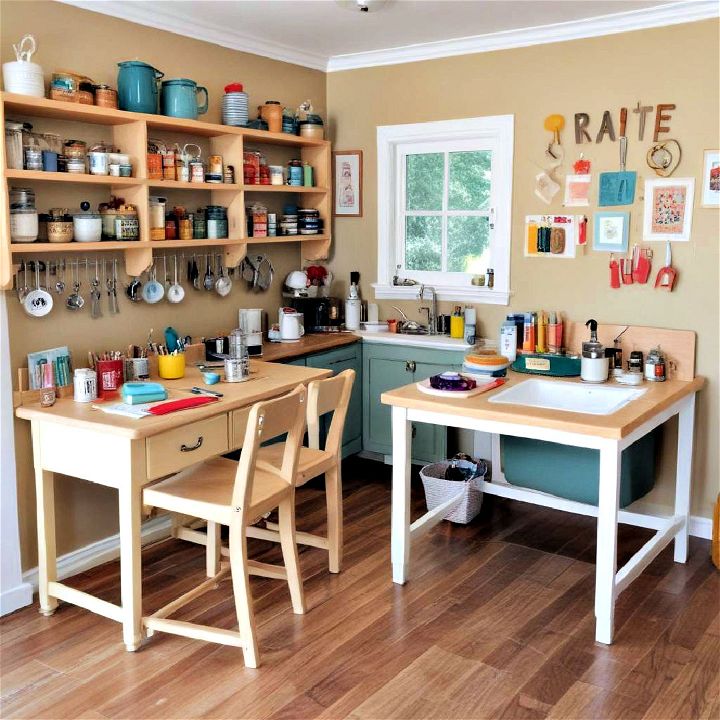
Transform your space with these innovative homeschool room designs. Create a life skills area for activities like cooking, sewing, and gardening. These practical lessons teach valuable everyday skills and foster independence. Making real-world applications part of homeschooling helps children gain confidence and competence, bridging the gap between academic learning and daily life.
20. Technology-Free Zone
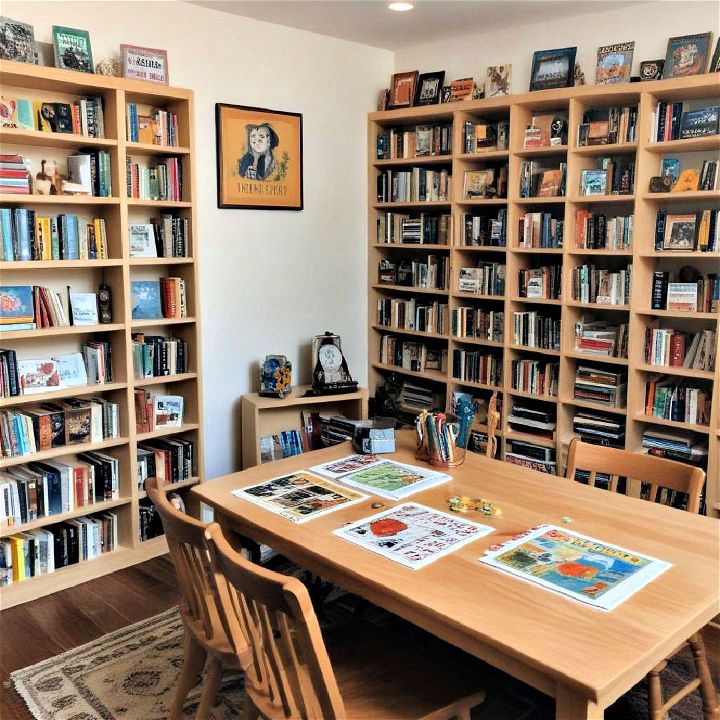
Establish a technology-free zone free from screens and electronic devices. Equip the space with books, puzzles, and board games. This digital detox area encourages face-to-face interaction and hands-on learning, providing a balanced approach to education in a tech-driven world.
21. Math Manipulative Station
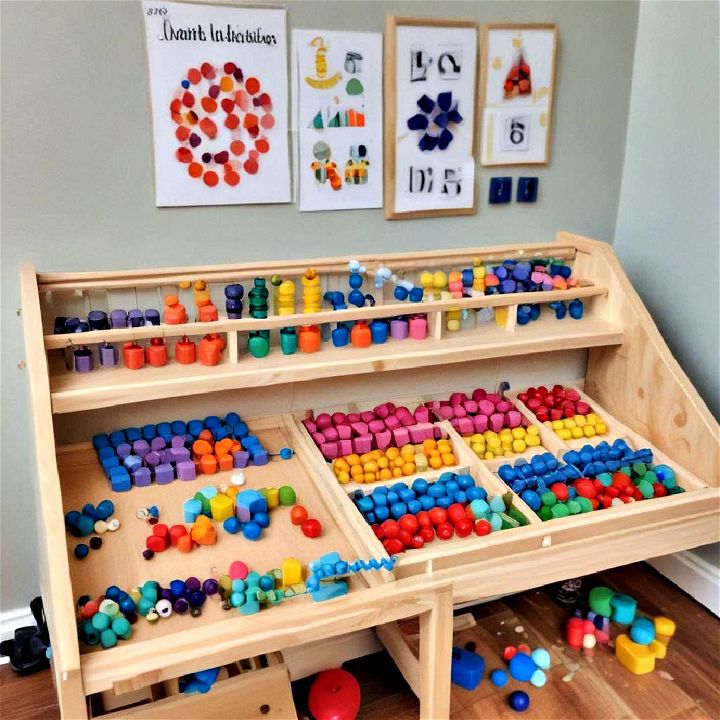
Set up a math manipulative station with counting beads, blocks, and geometric shapes. These tangible tools make abstract math concepts easier to understand. Engaging in hands-on activities helps children grasp numeracy skills, enhancing their problem-solving abilities and making math more enjoyable.
22. Writing and Journaling Desk
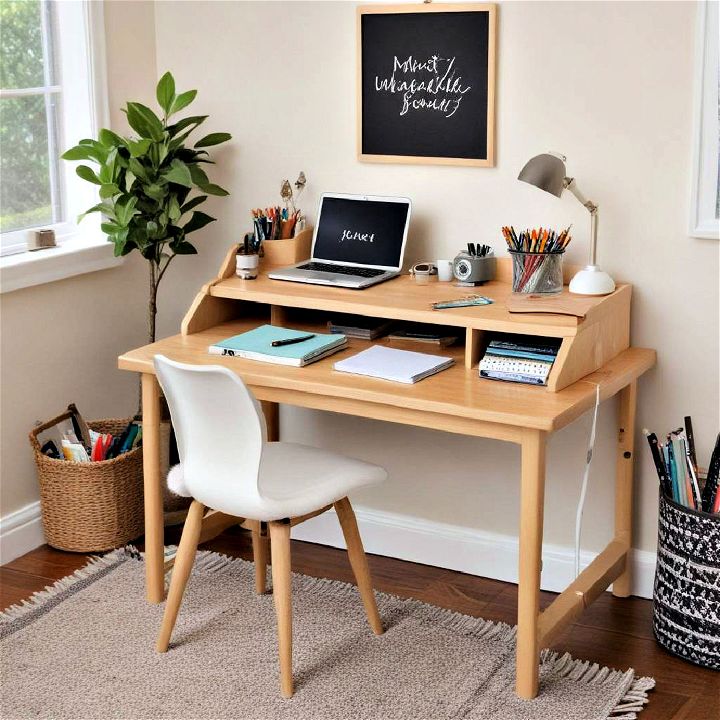
Create a dedicated writing and journaling desk stocked with notebooks, pens, and creative prompts. Encourage daily writing practices to improve literacy and self-expression. This space fosters a love for writing and helps children develop strong communication skills, essential for their academic growth.
23. Learning Through Play Area
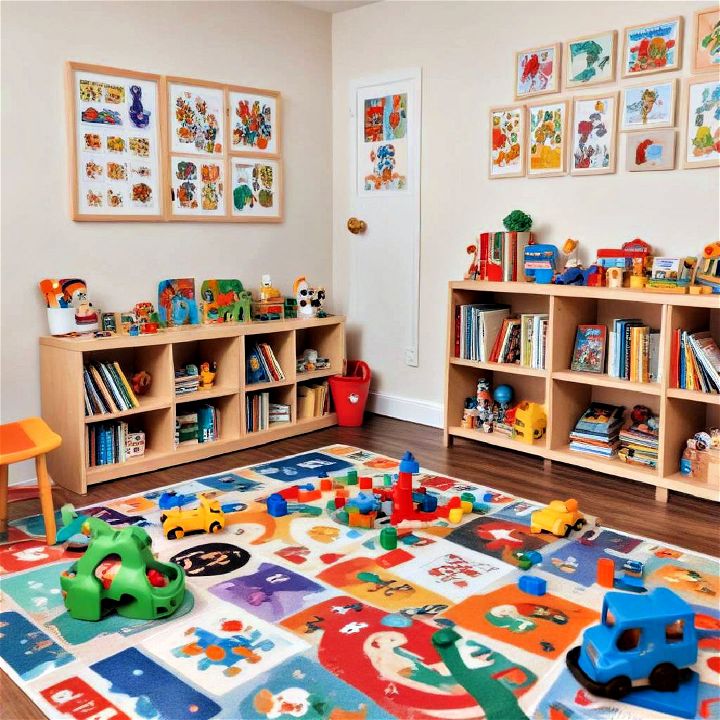
Include a learning-through-play area with educational toys, puzzles, and games. Play-based learning enhances cognitive development, social skills, and creativity. Offering a balance of fun and education, this area keeps children engaged and motivated, making learning an enjoyable experience.
24. Interactive Science Wall

Maximize your space with these clever small homeschool room ideas. Install an interactive science wall equipped with magnetic boards, charts, and hands-on kits. Use this space for experimenting and visually displaying scientific concepts. This tactile approach to learning helps demystify science, fostering curiosity and a deeper understanding of the natural world.
25. Flexible Seating Arrangements

Incorporate flexible seating arrangements like standing desks, wobble stools, and floor mats. Offering various seating options caters to different learning styles and needs. Flexibility in seating enhances comfort and focus, creating an adaptive environment that accommodates active participation and diverse preferences.
Conclusion:
In conclusion, creating the perfect learning space for your kids can be both fun and fulfilling. By implementing these 25 homeschool room ideas that every parent should know, you can create an inspiring and efficient environment. With the right homeschool room ideas, your children can thrive academically while feeling comfortable at home. Remember, creativity and organization are key to an effective homeschool classroom.

